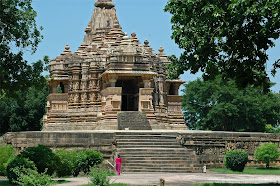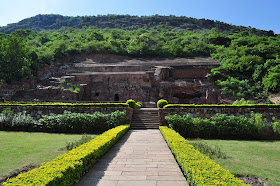Constructed By: Haji Begum (Humayun's wife)
Year of Construction: 1565 AD
Entombs: Mughal Emperor Humayun
Location: Mathura Road, near its crossing with Lodi Road
Highlights: Mughal Architecture
Timings: Weekdays (Sunrise to Sunset)
After wandering in wilderness for 25 years, Humayun reoccupied Delhi in the year 1555 AD but he was not destined to rule any longer and died barely six months of his arrival, from a fall in his library, Sher Mandal. Humayun's tomb was built by his widow, Hajji Begum around 1565 AD. The Taj Mahal and many other Mughal buildings are said to have been inspired from Humayun's tomb. Humayun's tomb is one of the world heritage sites. The tomb of Humayun is based on Islamic paradise gardens. This type of garden is known as a Charbagh and is based on a grid system. The square garden is divided into four large squares and separated by causeways and channels with each square again divided into smaller squares.
Humayun's tomb is remarkable in many ways. Humayun's tomb is the first Indian building to use the Persian double dome; it is noteworthy for its harmonious proportions. Like many later Mughal tombs, Humayun's tomb is set upon a platform. Humayun's tomb is built with red sandstone, but white and black marble have also been used to relieve the monotony in the structure. The lofty mausoleum is positioned at the centre of the enclosure and rises from a plinth faced with series of cells with arched openings. The central octagonal chamber of Humayun's tomb, containing the cenotaph is encompassed by octagonal chambers at the diagonals and arched lobbies on the sides and their openings closed with perforated screens.
Each of the sides of the monument is dominated by three emphatic arches with the central one being the highest. The same plan is repeated on the second storey and a 42.5m high double dome of marble surmounts the roof with "Chhatris" (pillared kiosks) placed around it. Some of the apparent Indian features in the monument are the small kiosks or chhatris on the roof. Humayun's tomb is also remarkable for its inlaid tile work and carving, representing both Indian and Persian decorative elements. Humayun's tomb was designed by the Persian architect, Mirza Ghyas. In addition to the remains of Humayun, the complex also houses the grave of many other distinguished members of the Mughal dynasty.

















































